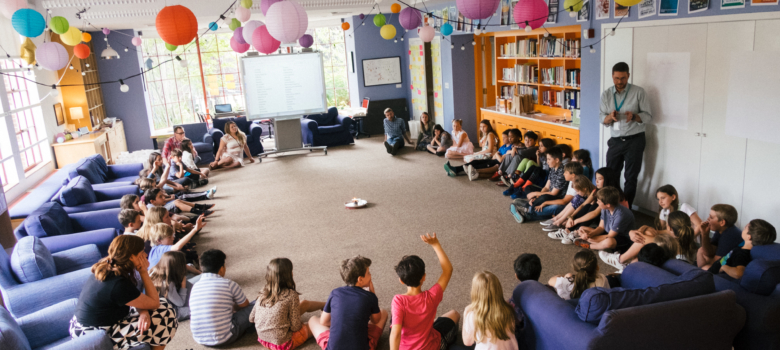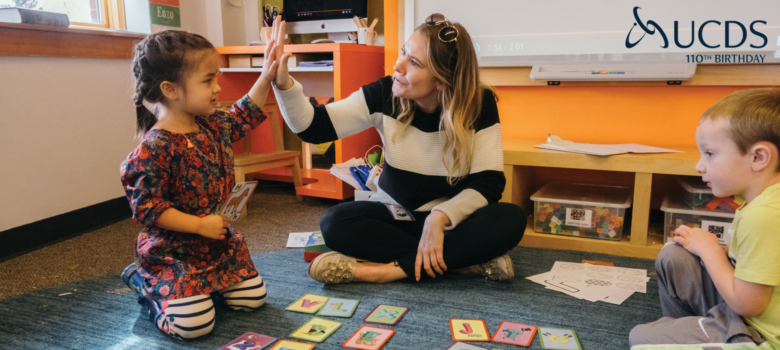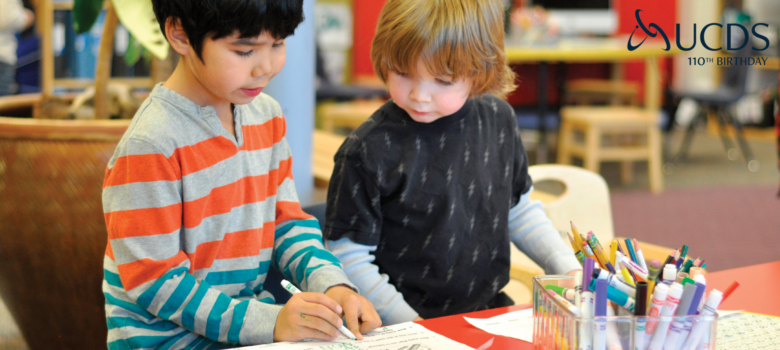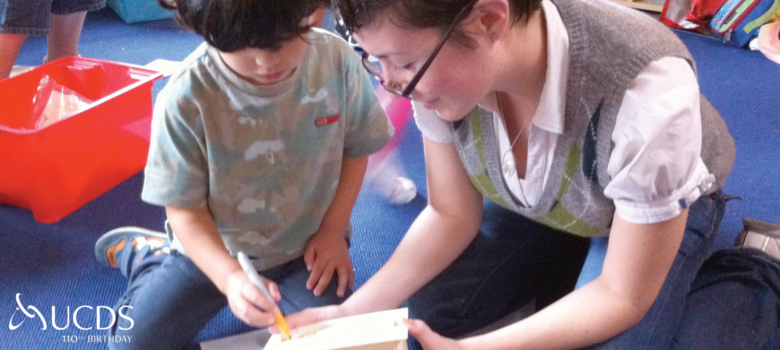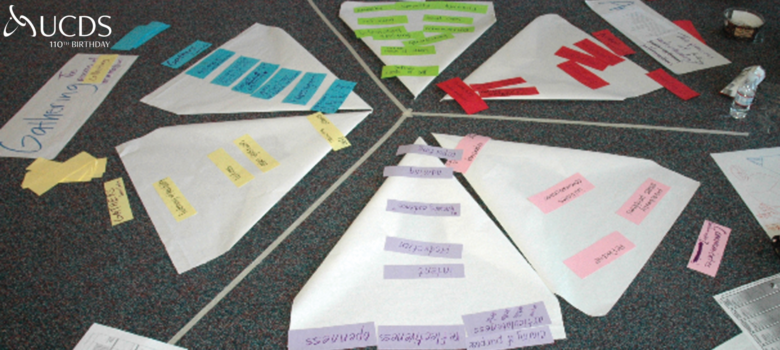By Abby Sandberg PhD, Learning Specialist and Early Elementary Division Head
Navigating social relationships is a tricky part of life. As adults, we know that our daily experience is full of mis-steps, misunderstandings, and sometimes, dealing with situations of being “not nice on purpose.” Take a stroll on any social media and you’ll see plenty of examples of grown ups learning how to have civil discourse!
At UCDS, we know that learning how to work and play with those around you is an important part of being at school. The skills children learn about navigating their social worlds lay a foundation for their social lives to come. While specific conflicts, themselves, are ripe with learning opportunities (e.g., understanding that hitting is not a good way to communicate), the process of helping children work through those social problems is also a teachable moment. What does the child learn about how to approach problems? Do adults engage them in problem solving in a way that will encourage them to seek out help in the future? Do they learn helpful strategies to prevent conflict, or solve conflicts on their own? Do they lean into problem solving, or avoid the sometimes uncomfortable process of working it out?
The idea of helping young children work through the problem-solving process may seem like an easy task, but attempt to work out a squabble about jewel sharing with a group of four-year-olds and you’ll quickly discover it’s not so straightforward. Enter a situation where someone might have done some unkind on purpose and it becomes even more complicated. It may feel tempting to step in and simply deliver a solution that, to you, seems reasonable. Although taking this path of least resistance is efficient, it robs children the opportunity to learn how to navigate these conundrums independently.
Social problem-solving takes time, which in our busy lives can seem like a precious commodity to dole out. Our job as educators, though, is to help children see the value in taking time to work things out and bring closure. The biggest goals of problem solving with young children is that they feel heard, have practiced honesty, identified emotions associated with the situation, addressed concrete ways to fix mistakes, and have made a plan on how to navigate differently in the future.
Although there isn’t a road map for every problem solving situation, here are some tips that are often helpful to guide the process:
- Stay calm. By keeping your own emotions out of the situation, children see you as a resource, rather than a source of judgement.
- Help children de-escalate. Before doing any problem solving, help children take some deep breaths and calm any tears and emotions.
- Support children to talk through details of the situation. Grow their awareness of how emotions manifest by asking questions such as:
- “What did you notice about his face when you said he couldn’t have any jewels? What might he be feeling?”
- “How did you feel when they said you couldn’t play with them?”
- “How might your friend feel when she came to the playground and one person had all the sandbox shovels?”
- Inquire about what problem-solving strategies they might have already tried. Ask if they have any other ideas of how they might fix a situation. Sometimes kids have really great strategies, but just need a little adult support to put them in action. If they’re feeling stumped (which often happens!) feel free to generate a variety of viable options and let the children choose which one they want to try.
- Leave the problem-solving process with a concrete plan of how:
- An issue will be resolved. “It sounds like you are both agreeing to each take a turn with the shovel for 5 minutes. Shall I keep time for you and check in when it’s time to switch?”
- A mistake will be amended. “I’m sorry I bumped into you when I was lining up. I’ll be more careful next time and use walking feet. Are you okay? Do you need an ice pack?”
Keep in mind that young children are still learning problem-solving language. They may need coaching and guidance to express themselves. Model the language out loud and invite them to try it out. “I felt left out when you said the soccer teams were already full.” “I felt frustrated when I said ‘stop’ and everyone kept chasing me.”
Be patient! The process, itself, takes time. It’s also okay to let everyone calm down and then revisit the issue later when everyone is better able to participate. (Don’t wait too long, though, as their developing memory systems need a relatively quick follow up, which allows them to be as accurate as possible when debriefing.)
Expect these skills to develop over time. Although sharing may come easy one day, the following day may be a different story. Kids need practice! The more you set the stage that you are there to help them, the more they will engage with the problem-solving process and the more independent they will become.

